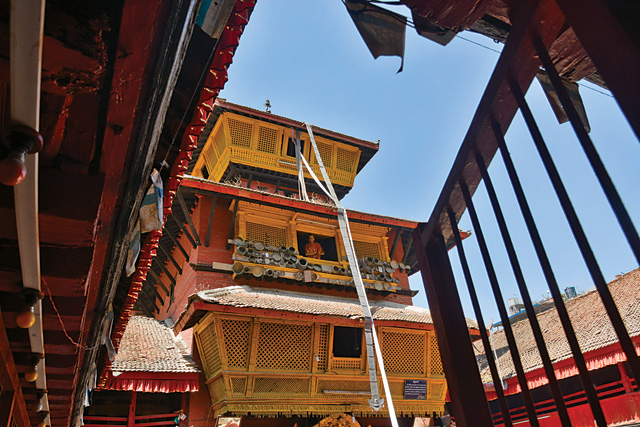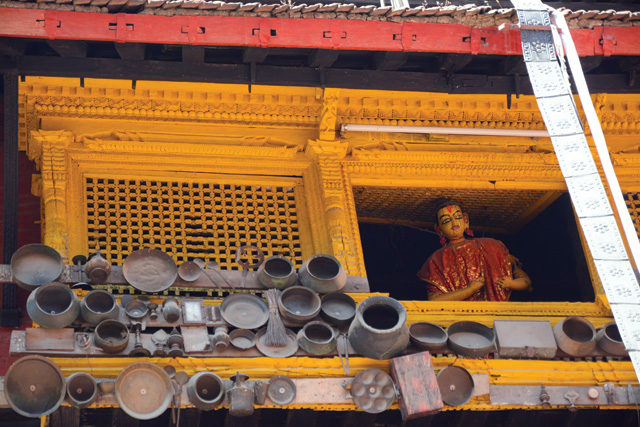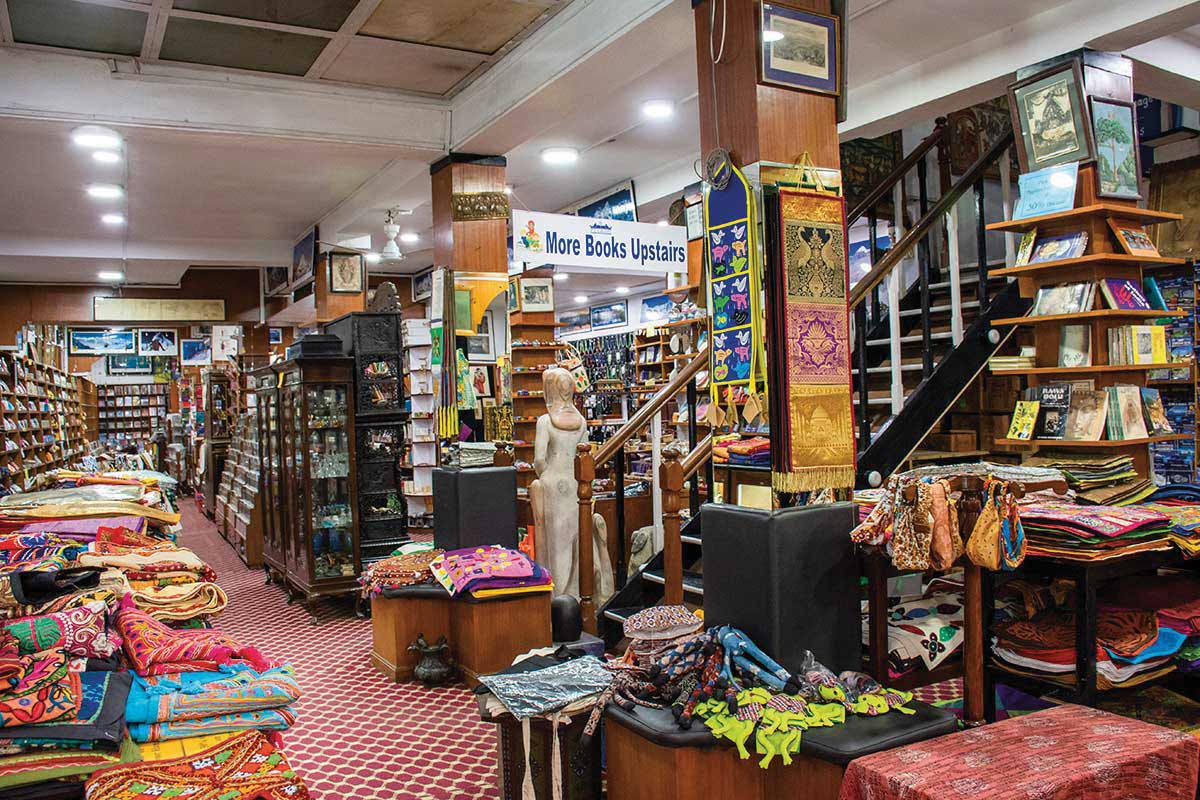The legend of Singha Sartha Bahu, the pioneering trader whose foreign ventures probably contributed in a major way to the economic success of the Kathmandu valley for many centuries.

When king Gunakamadev established Kathmandu city in the 10th century CE, a rural area known as Tham village existed to the city's northern outskirts. In his travelogue, visiting 13th century Tibetan Buddhist scholar Dharmaswami, who stayed here to pursue his studies, gives credit to Indian Buddhist scholar Atisha for the construction of a Buddhist monastery, called Tham Vihar, in the second half of the 11th century CE. This monastery is presently known as Tham Bahi in the Newa language. Thamel is the corrupt form of Tham Bahi. Also called Vikramsheel Mahavihar and Bhagwan Bahaa, this monastery is one of the oldest such structures in Kathmandu valley.
Flanked by two larger courtyards to the north (Agam Chuka) and the south (Tun Chuka), the central monastic courtyard of Tham Bahi has a large icon of Dipankar Buddha on the ground floor of a four?storey building facing east. The caretakers of Tham Bahi are from the Pradhan community. This is unique, as Pradhans are high?class Hindus among the Newa community – it is only in Tham Bahi that they follow Buddhism.
Close by is Gaa Hiti, an ancient water conduit with intricately carved stone spouts that provide potable water throughout the year till this day.
 In addition to many other artifacts of great archaeological and artistic value, Thambahi houses the rare Pragya Paramita Buddhist scripture written with gold and silver ink in 1223 CE. Famous 17th century king of Kathmandu, Pratap Malla added a few lines at the end of this scripture in his own handwriting.
In addition to many other artifacts of great archaeological and artistic value, Thambahi houses the rare Pragya Paramita Buddhist scripture written with gold and silver ink in 1223 CE. Famous 17th century king of Kathmandu, Pratap Malla added a few lines at the end of this scripture in his own handwriting.
Many ancient religious and cultural practices in this monastery have survived the passage of time. Designated priests still conduct daily worship of the various shrines in Tham Bahi. The Pragya Paramita handwritten book and other relics are put on exhibition for the general public at the monastery for a few days in Shrawan (July/August) during the holy month of Gunla.
However, much of the land bestowed as trust fund to support the various cultural and religious activities related to Tham Bahi, and for the maintenance and upkeep of the physical structures there, have been gradually destroyed. One such property is a nearby pond, the pristine water from which was used for daily ritual worship of the Tham Bahi shrines. A large commercial complex currently being built has completely usurped this holy pond, despite the ongoing efforts of the Tham Bahi community to fight a legal battle against the construction.

Till today, the full?height metal image on the ground floor of the three?storey temple of Tham Bahi is worshipped every day as Singha Sartha Bahu or Garuda Aju, who is regarded by the Pradhan community of this area as their ancestor. A similar image, stored elsewhere in the monastery complex, is put on display on a small shelter in the adjoining Tun Chukha courtyard on the full moon day of Fagun (February/March), and is paraded around town the next evening accompanied by traditional musical and much religious fanfare. The reason for this honor bestowed upon the deity, popularly known as Chakan Dyo, is based on a vibrant legend.
Singha Sartha Bahu was a merchant who took off on an ambitious business venture to a faraway land with five hundred men on his entourage. At a night stop during the journey, man?eating demons disguised as beautiful women took hearty care of the traders. At farewell next morning, the damsels invited the men to stay back with them, promising happiness ever after. At this moment, Lord Karunamaya Avalokiteshor, the Buddhist deity of compassion, appeared before Singha Shartha Bahu and revealed the real identity of the women to him, and also presented him with a gigantic flying horse. All five hundred men mounted the horse and fled, with Singha Shartha Bahu sternly warning his group members not to look back. Yet, enticed by the seducing calls of the bewitching lassies, the men turned their head backwards and immediately fell off the horse and were devoured by the demons.
Singha Sartha Bahu, however, was not the only one who landed safely in Tham Bahi on his flying horse. A persistent ogress followed him all the way there, and struck a deal with the people of Tham Bahi that she would not harm anyone if she was given food every morning before any human is fed. She was thereby venerated as Jatika Ajima, and a small shrine was built in her honor adjoining the main Tahm Bahi courtyard. Till today, the priest conducts a ritual where he offers the excess liquid collected while boiling rice each morning to Jatika Ajima. A small conduit connecting the priest's kitchen to Jatika Ajima has been built for this purpose. In Newa terminology, "jati" is the excess liquid, the "ka" is take.
"Ajima" is the conjunct of aji (grandmother) and ma (mother).










